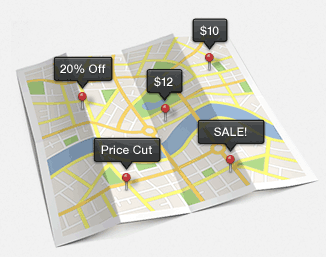4 Paid Search Strategies For Converting On-The-Go Customers
Consumers are increasingly engaging with businesses while they’re on the go. In fact, of the 94 percent of smartphone owners searching for local information, 84 percent of them take action based on their search results. This shift in consumer behavior is redefining the approach advertisers take when engaging with their mobile customers. Not only are […]
Consumers are increasingly engaging with businesses while they’re on the go. In fact, of the 94 percent of smartphone owners searching for local information, 84 percent of them take action based on their search results. This shift in consumer behavior is redefining the approach advertisers take when engaging with their mobile customers.
Not only are paid search advertising budgets continuing to move from desktop to smartphone devices, but businesses are also realizing the need to provide device- and location-optimized shopping experiences.
To successfully engage and convert on-the-go customers and maximize revenue outcomes across devices, advertisers must address the following challenges:
- Increasing Campaign Complexity: Large accounts often contain campaigns that lack the granularity required to provide a mobile-optimized experience. Manually managing the complexities of geo-targeted campaigns with mobile-optimized creative is time consuming and prone to errors.
- Segmenting Big Data: The aggregation of data across devices limits the ability for search marketers to segment mobile performance and gain insights to optimize for time-of-day and geo-specific purchase behavior.
- Mobile-Specific Language: 61 percent of smartphone users look only at the first page of results, according to Our Mobile Planet research. In other words, these on-the-go customers don’t expect to search far when making local purchase decisions. Rather, they expect relevant device- and geo-specific language that’s unique from what would be found on the desktop.
- Limited SERP Real Estate: With 89 percent of mobile searchers noticing mobile ads (according to Our Mobile Planet findings), competition for optimal ad position is enhanced due to the limited search engine results page (SERP) real estate on smartphone devices. Competitors entering the auction continuously displace brands from these preferred positions, hindering their ability to convert mobile customers.
Sophisticated online advertisers address these challenges and convert on-the-go customers using the following methods:
1. Manage Mobile & Desktop Campaigns At Scale
An effective mobile strategy starts by creating mobile- and desktop-optimized campaigns. To provide the most relevant local shopping experience, search marketers must continuously generate and test mobile-specific ad creative that target key geographic regions. This requires an efficient workflow management platform that allows for the copying and bulk management of device- and geo-targeted campaigns.
2. Segment Mobile Performance
Customer behavior varies across mobile and desktop devices, making it critical for search marketers to segment paid search performance by device. To be actionable, these segments must roll up performance across campaign objects and business needs, such as product line and geography.
Reporting tools that allow analysis at this level of granularity provide search marketers with actionable insights for optimizing the mobile shopping experience and implementing mobile-specific bidding strategies.
3. Deliver Mobile-Specific Creative

This includes the implementation and management of mobile location and call extensions. These extensions can mean the difference between a customer purchasing and a customer abandoning a brand in favor of a competitor.
4. Implement Mobile-Based Bidding Strategies
Mobile searches and conversion rates vary throughout the week. Identifying these trends and implementing a dayparting strategy allows advertisers to engage mobile customers with the right experience at the right time.
To combat competitors vying for optimal ad positions across mobile devices, search marketers must also continuously adjust bids based on segmented performance. Solutions that calculate optimal mobile bid adjustments enable advertisers to maximize visibility and convert more on-the-go customers.
The Investment In Mobile Continues
Search engines continue investing in mobile targeting and ad technology, most recently Google’s expansion and enhancement of Product Listing Ads (PLA) on mobile devices. For advertisers, this rapid pace of ad innovation and mobile adoption by consumers presents an incredible revenue opportunity.
As this opportunity grows, search marketers must continue addressing the challenges of converting on-the-go customers while also incorporating other critical strategies, including optimizing by product category and for seasonality. Successfully executing a mobile strategy and leveraging ad management and optimization technology will enable advertisers to remain competitive and profitable in an increasingly mobile world.
Images courtesy of Marin Software
Contributing authors are invited to create content for Search Engine Land and are chosen for their expertise and contribution to the search community. Our contributors work under the oversight of the editorial staff and contributions are checked for quality and relevance to our readers. The opinions they express are their own.
Related stories
New on Search Engine Land